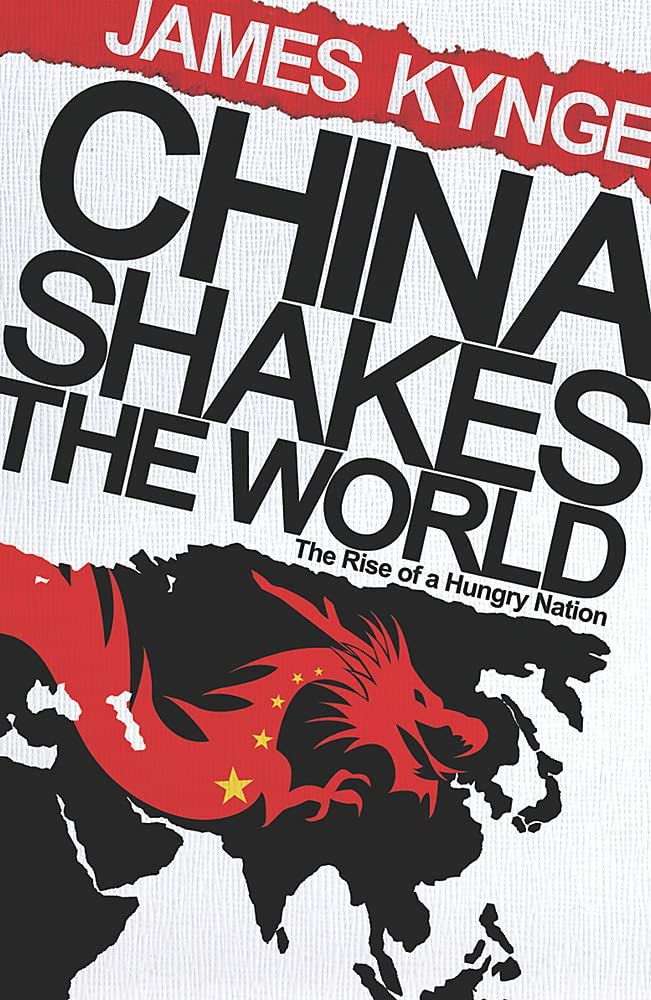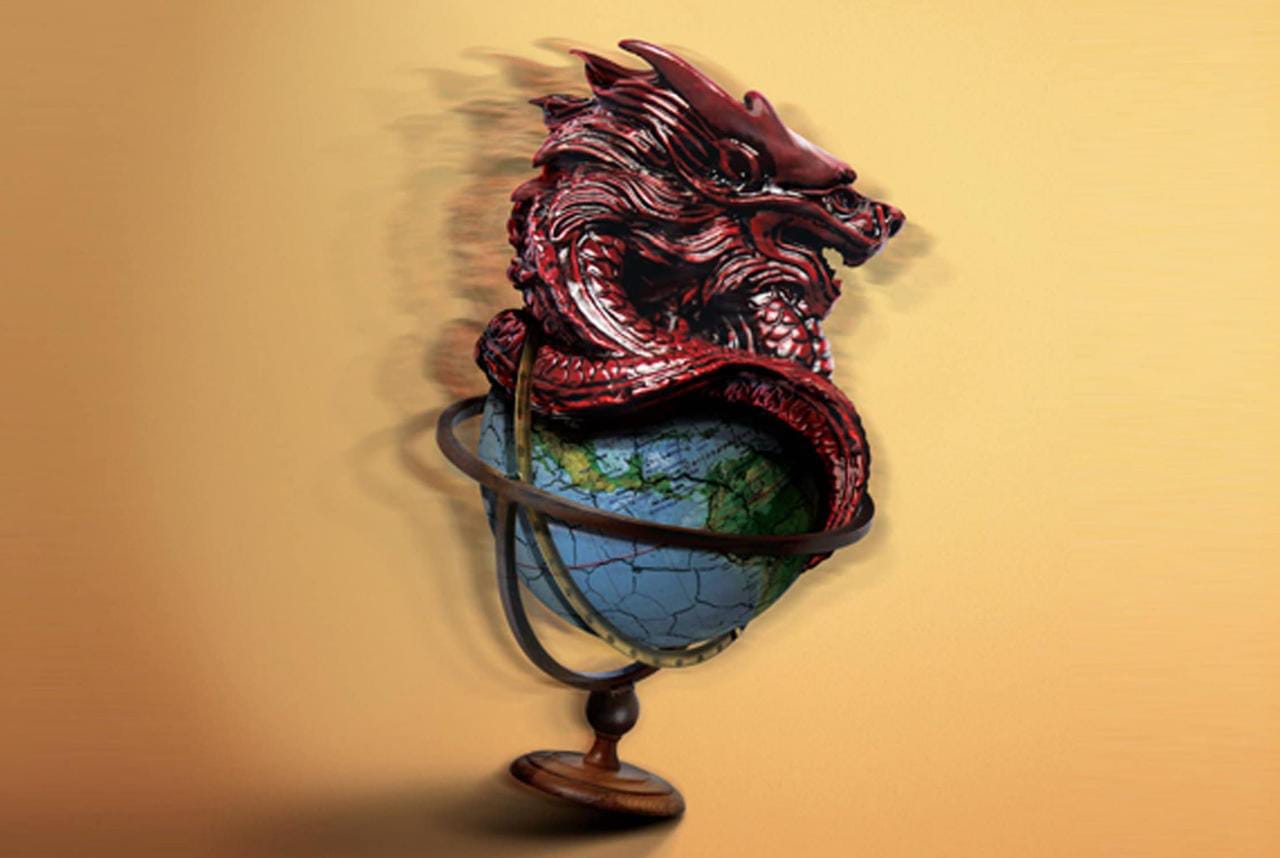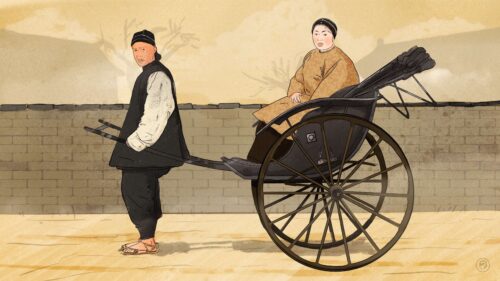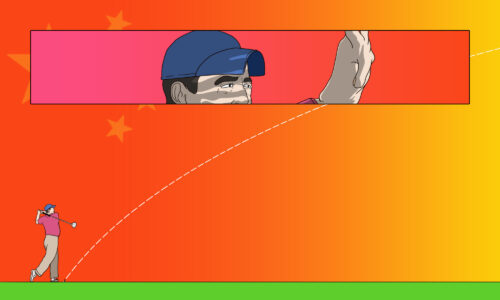This is book No. 13 in Paul French’s Ultimate China Bookshelf.

Blurbs:
“Schumpeterian creative destruction and relentless entrepreneurship are ably captured by James Kynge in China Shakes the World. Kynge draws on a store of insights and anecdotes gathered during his 19 years as a journalist in Asia.”
—Bloomberg News
“A balanced and very readable account of China’s metamorphosis from Maoism into the workshop of the world. China Shakes the World is an excellent book, far more useful and sensible than most business bestsellers or the majority of general introductions to modern China.”
—Financial Times
“Kynge assesses the socioeconomic transformations of China’s low ‘Industrial Revolution-era’ labor costs and modern production technology at home and abroad. But for all its world-shaking potential, notes Kynge, ‘China’s endowments are deeply lopsided.’ Key weaknesses — such as a shortage of arable land, serious environmental devastation and pollution, systemic corruption and a dearth of resources — are conversely helping to ensure that China will have to manage its growing hegemony in a symbiotic manner with partners on the economic and geopolitical playing fields.”
—Publisher’s Weekly
“Resident in China for many years, latterly as bureau chief for the Financial Times, he is admirably knowledgeable about the subject and the country. He tells the story of China’s rise with sympathy and insight. Nor is he in any doubt about its broader implications. Kynge argues that China’s rise is akin to that of the United States in the late-19th century, except on a far greater scale and with much greater speed, and that China’s impact will, as a consequence, be commensurately greater. He dismisses the idea that China will somehow get stuck as a low-to-medium technology economy and shows how it is already acquiring a hi-tech capacity across quite a broad range of industries.”
—The Guardian
About the author:
James Kynge is currently based in London as the Global China Editor at the Financial Times, where he reports mainly on what China is doing beyond its own shores. He first went to China as a Chinese-language student at Shandong University in 1982 and has been reporting on China’s emergence since 1986, with the exception of a brief three years working in business from 2006 to 2008 in Beijing. Kynge is a member of the advisory board of Merics, a Berlin-based think tank dedicated to China studies, and is also a British Council “leading light,” a role in which he helps encourage young people to learn more about China.
The book in 150 words:
In 2006, James Kynge’s China Shakes the World proved a much-talked-about bestseller translated into 19 languages and won the Financial Times/Goldman Sachs Business Book of the Year 2006. The basic premise was that, in 1979, after 30 years of Maoist economics and political control, China’s economy contributed a mere 2% to global GDP. By the early 2000s, as reform and opening up took hold, it moved back up to 5%, and rising. Kynge felt confident that, largely through manufacturing and a slow rise up the value and innovation chain, China’s share of global GDP would continue to rise (a not-wholly consensus opinion at the time). Yet there were challenges — environmental pollution, a crisis in social trust, a weak financial system, and the faltering institutions of its governments.
Your free takeaways:
To understand these forces better, it is necessary to delve into a crucial, yet often misunderstood, passage of history. In the popular imagination, the launch of China’s economic reforms in 1978 was a planned, top-down affair managed by a man who is often called the ‘architect’ of the country’s emergence, Deng Xiaoping…But at the outset the reforms were precipitated by a payments crisis.
Understanding the haphazard nature of much that happened in the 1980s assists in appreciating where men like Shen came from. Chaotic times throw forth heroes. Several of the entrepreneurs who by the late 1990s were driving Mercedes, flying first-class to the World Economic Forum in Davos, Switzerland, and sending their children to the best British public schools started at the bottom of the social pyramid in the early 1980s.
Economically, population forms China’s most basic paradox. It is at once its greatest strength and its gravest frailty. An unparalleled stock of human capital allows it to assume the characteristics of several countries at once. Its huge pool of low-cost, diligent factory workers arouses envy across the developing world and yet China is not merely a giant sweatshop.
The problem started in the 1980s when tens of thousands of small companies…dumped their toxic waste into it (the Huai River). By the early 1990s there were clear signs of distress. The water in many areas was unfit to drink, cancer rates were twice the national average and, according to one report, for years none of the boys from certain villages in the Huai River area were healthy enough to pass the physical examination required to enter the armed forces. But when Beijing resolved to address the problem, things merely got worse.
Why this book should be on your China bookshelf:
Apparently it was Philip L Graham, the president and publisher of the Washington Post, who first said “journalism is the first rough draft of history.” A useful phrase and one we can apply to James Kynge’s China Shakes the World.
Near the start of the book, Kynge has an anecdote that has since become quite famous and oft-repeated. I know this because it has been told to me several times over the years by people who are definitely not James Kynge. So, either the train he was on crossing Italy, overhearing a group of Chinese businessmen wondering why there was so much countryside and seemingly no factories, was packed with contemplative “China Watchers,” or people like the anecdote and nick it. It’s the latter of course — a good illustrative anecdote and easily adaptable. And true, if credited to Kynge and not a famous canard like the legendary boast of knowing Pudong when it was all chicken farms, or Shenzhen when it was just a fishing village. Those are lies. Anyway…
Kynge takes us back to a time when the consensus was not universally that China’s economic rise would continue. But also to a time of Beijing’s accession to WTO in 2001 (and that other great character of the era, premier Zhū Róngjī 朱镕基) and to the immediate aftermath years of the handover of Hong Kong from British to Chinese sovereignty. He deftly uses anecdote: that Italian train ride, as well as linking symbolically the disappearance of iron manhole covers around the world to Chinese need for raw material and scrap metal and (in the first section of the book, “Rags to Riches”) a tour of the ThyssenKrupp steel mill in Dortmund where high taxes following German reunification prompted the company to shift to the Yangtze River Delta.
His chapter “The Population Paradox: Innovation, Piracy, and the Grail of Market Share” shows an example of how Jianshe Industrial, an old armaments firm, went about looking for spare parts and through reverse-engineering rebuilt a Yamaha engine, and subsequently went about to create three new engines of their own model and technology in three years flat. He also takes on the question of American jobs “lost” to China.
Many of Kynge’s conclusions may seem obvious to us now. He looked at the potential effects the many deficits in the system — environmental destruction, corruption, protectionism, etc. — could potentially have both to China’s continued economic growth and the world economic system it was rapidly becoming once again an integrated part of. But this is the very reason China Shakes the World qualifies for the Ultimate China Bookshelf: what was not necessarily readily apparent to readers in 2006 was, in large part, made so by this book. To understand how we now automatically process issues of public distrust of the state in China, continuing environmental malaise, rampant piracy, and official corruption, we need to look back at how Kynge reported these factors in the early 2000s.
In a sense, Kynge’s China Shakes the World was a scorecard on the quarter-century of post-Mao opening up and reform. How successfully had the Party managed to turn the giant supertanker of China away from the rocks of, at best, a long malaise, and, at worst, a possible economic collapse, and rebuilt the economy. Amid the rash of new books examining the Dèng Xiǎopíng 邓小平 era of reform we should remember that such titles were hard to find in 2006. Within that was the big question for many at the time — just how big would China’s economy get? And what did that expansion mean for the rest of us outside China trying to compete, trade, and comprehend this new global economic force?
Next time:
Next time, by way of a neat literary onomastic segue, let’s go back half a century or thereabouts to the book that in part inspired Kynge’s title — Jack Belden’s 1952 China Shakes the World, when the economic system Deng Xiaoping sought to unravel and Kynge to explain was initially being put in place by Mao. There was Belden, back in 1949, writing his own “first rough draft of history” as the PRC was created.
Check out the other titles on Paul French’s Ultimate China Bookshelf.







